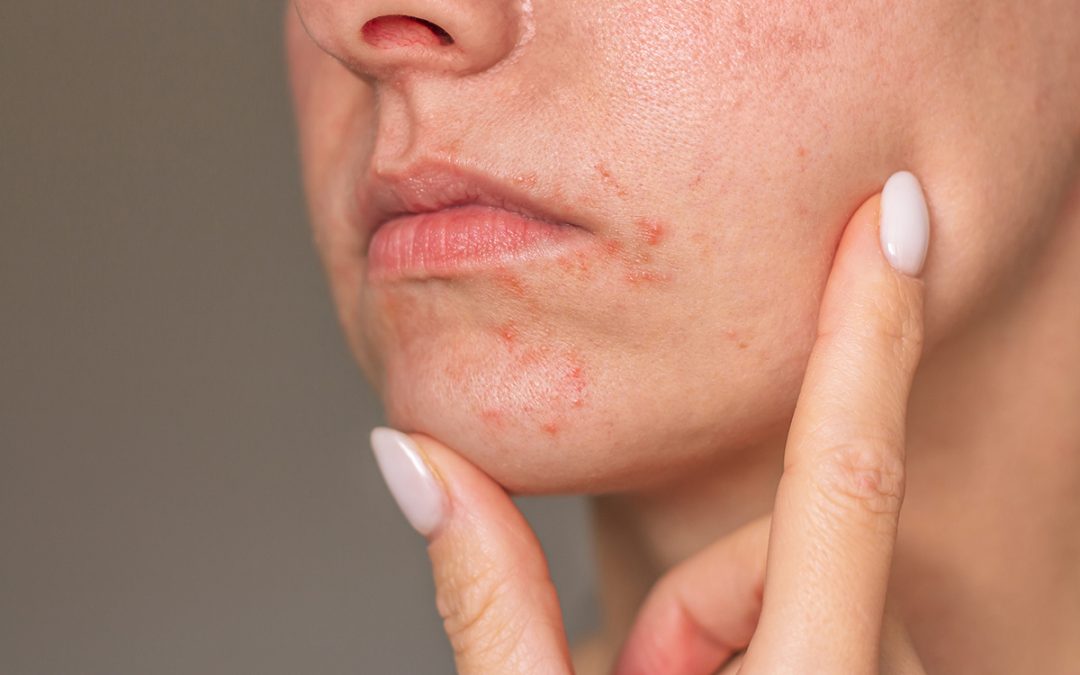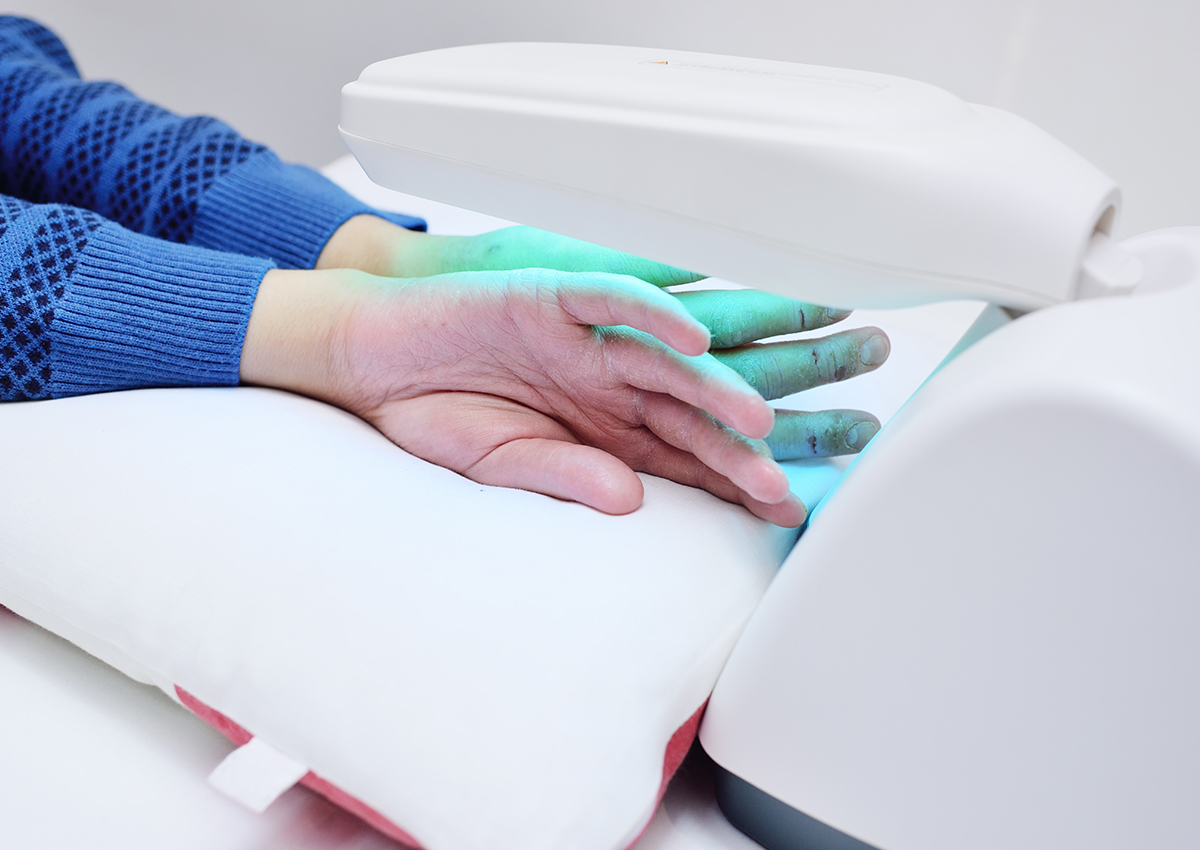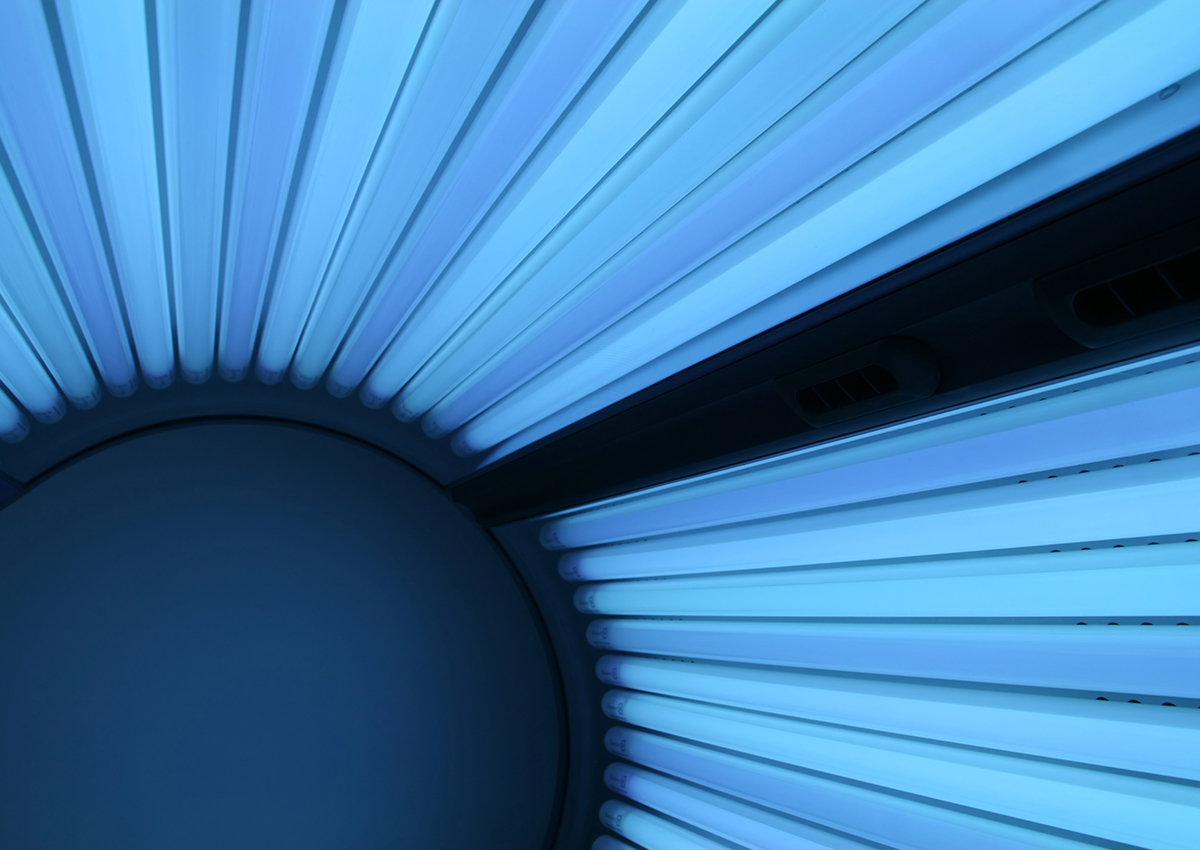*Disclaimer* The information provided in this post does not and is not intended to constitute medical advice. Always consult a healthcare professional with respect to any medical condition before taking steps with any treatments.
Finding the right treatment for eczema can feel like an uphill battle, and it’s not without reason. It’s well-documented that this inflammatory skin condition can have a tangible impact on a person’s quality of life. You may have heard on the grapevine that UV treatments are the way to go, but with long NHS waiting lists and pricier private care, you might wonder can sunbeds help with eczema?
In this comprehensive guide to UV and its connection to the alleviation of inflamed skin, we’ll clear up some common questions whilst offering a handful of skincare suggestions along the way. Let’s go.
What causes eczema?
Most people are aware of what eczema is and how it can be a hassle to manage, but what exactly causes it?
Well, as eczema is a type of dermatitis (a condition that causes inflammation to the skin), it’s usually a mixture of environmental and genetic factors.
If you have a history of eczema or related skin conditions, the risk of you acquiring it goes up. Similarly, if you live, work or spend a significant amount of time in an area filled with irritants that stress out your skin, you may find that your eczema flares up. Air pollution, harsh cosmetics and low humidity are all examples of such irritants.
Other factors include your immune system, how you react to particular medications and emotional triggers such as stress, anxiety and depression.
Types of eczema
There are several types of eczema that can affect the skin – 7 to be precise – and each materialises in a slightly different way. We’re not going to dwell too deeply on these differences, but here is a quick rundown, so you can do your own research.
- Atopic dermatitis: A very common form, most present in children but can happen at any age, and is characterised by dryness.
- Dyshidrotic dermatitis: Characterised by blisters, reddened and burning skin.
- Contact dermatitis: Triggered by external, environmental factors, causing irritation.
- Stasis/varicose dermatitis: Typically found in individuals with poor circulation, it can cause achiness in affected areas, scaling, dryness, and itchy skin.
- Neurodermatitis: Risk factors include psoriasis and anxiety, with the eczema appearing in extremely itchy patches.
- Seborrheic dermatitis: Usually affects the scalp and other areas with lots of oil glands, materialising as inflamed and itchy skin.
- Nummular dermatitis: Occurs in very dry skin in scattered, circular patches.
Atopic dermatitis and contact dermatitis are the most common of the above examples, and can be offered ultraviolet (UV) light treatment in order to reduce inflammation if the sufferer is referred to a dermatologist.
The link between UV treatment and skin conditions
As we’ve just mentioned, there’s a correlation between UV light and reduced inflammation of the skin, but how does this work and what does this mean for the average eczema sufferer?
Well, first of all, it’s important to note that the application of UV light is most effective during flare-ups. Usually, this will be prescribed by a dermatologist and entails exposing the impacted skin to a controlled source of ultraviolet light, which helps to inhibit the main symptoms of the eczema.
This process works thanks to UV light’s anti-inflammatory properties and immunosuppressive effects. Put simply, it behaves similarly to natural sunlight, and shuts down the overactive immune cells that are prevalent in a variety of skin conditions, including eczema.
Types of UV light used to treat eczema
Each type of light has a different wavelength, and each wavelength has varying implications for its usage. The main two used in relation to eczema are UVB and UVA rays.
Most commonly deployed of the pair is UVB whose light spectrum is limited and controlled to reduce side effects. UVA rays are also used, but this is often in tandem with taking specialised medication that helps the skin absorb the light.
Using tanning beds in place of traditional phototherapy
The question that you’ve been patiently waiting for: can sunbeds help with eczema (dermatitis)? While the answer isn’t exactly clear-cut, there is evidence to suggest that they can support the improvement of inflammatory skin conditions, atopic dermatitis and psoriasis included.
Low-level UVB exposure via sunbeds has great benefits, from vitamin D production to the aesthetic appeal. On top of this, indoor tanning is a better option for maintaining golden skin when compared to spray tanning, whose ingredients may irritate sensitive patches and contribute to worsened symptoms.
Can sunbeds help other skin conditions like psoriasis?
It’s a known fact that many people with psoriasis use sunbeds, the most famous being Kim Kardashian. Whether this is because of embarrassment from sunbathing in public or unpredictable British weather, UV light can positively impact the quality of life of individuals with the condition, alleviating their symptoms. This is for all of the same reasons as we mentioned above for eczema: the UVB rays target the problem immune cells that cause the inflammation.
Phototherapy vs commercial sunbeds
The main difference between using sunbeds to help with eczema and going down the route of traditional light therapy lies in the controlled nature and precision of the exposure.
In phototherapy sessions, specific areas of the body affected by eczema are targeted with a precise set of wavelengths, whereas individuals who use a sunbed for the same purpose expose larger parts of their body, depending on their preference.
A supplement, not the cure
While there is a good deal of research demonstrating the positive healing effects of UVB rays for people with eczema, psoriasis and other related conditions, this is by no means a cure. Indeed, it can help alleviate symptoms such as tenderness, redness and itching, but it can’t make the eczema go away completely.
That’s why a multi-pronged approach combining UV light, dietary changes, medications and lifestyle choices is better in the long run.
Using sunbeds as an eczema sufferer
So we’ve revealed that sunbeds that emit UVB rays can have a similar effect to medically prescribed phototherapy, but can you use them if you have eczema? The answer is a resounding yes.
But before you rent out a sunbed, there are a few caveats we need to run through.
Firstly, if your skin falls under “type 1” on the Fitzpatrick scale or you have a history of skin cancer, the Sunbed Association recommends that you should not use a sunbed at all. And, secondly, you cannot use a sunbed if you have an open wound; so if your eczema leads your skin to crack and bleed, you should wait until it has properly healed before getting close to a sun lamp or tanning tubes.
Key considerations
If you want to start using sunbeds and are satisfied that you fit the criteria to use them having read the previous section, there are a few considerations to mull over.
- How often to use them: If you’re a complete newbie, 2-3 sessions a week is a good starting point – just make sure that you leave a minimum of 24hrs between tanning.
- Finding the right sunbed regimen for your skin tone: Getting your timings right for your skin tone is crucial for a healthy and effective session, particularly if you’re tanning with fair skin.
- Choosing a suitable tanning bed: There are many types to choose from, each with different features like cooling fans and additional facial tanners.
- Skincare/prep: Before using a sunbed, you need to properly prep the skin, including gentle exfoliation, applying SPF and removing any other ointments, makeup or jewellery.
Staying safe when indoor tanning
For those with eczema, heeding the safety guidelines for sunbeds is particularly important due to the sensitivity of their skin.
As previously mentioned, if your eczema causes open cuts, you should wait until they’re healed before stepping into a sunbed. It’s also crucial that you apply any emollients at least half an hour before applying any suncream (preferably an unfragranced, antiallergenic brand) as it may dilute the solution. We also strongly recommend that you do not wear an emollient without suncream as this can accelerate the effect of the light and lead to burning.
As with any sunbed user, you should keep your skin nicely hydrated by moisturising following any sessions and make sure you drink plenty of water before and after using the machines.
Bonus skincare tips
To keep your skin safe between sessions, there are a few other measures you can take:
- During peak sun intensity, wear light protective clothing, sunglasses and a hat to avoid burning.
- Don’t forget to wear SPF when out and about, reapplying every 2-3 hours.
- Continue to hydrate and stay moisturised to keep your skin looking fresh.
So, can sunbeds help with skin conditions (eczema, dermatitis, psoriasis)?
Now that we’ve covered everything you need to know about UV light and its impact on dry, inflamed and itchy skin, you should be in a better position to take your next steps in terms of treatment.
While sunbeds are by no means a catch-all solution, they can be a practical supplement to your existing care such as emollients, topical corticosteroids and lifestyle changes. If phototherapy is off the table for you, indoor tanning presents a more convenient way to absorb UV light, making it a viable option for those who have more severe flare-ups.



